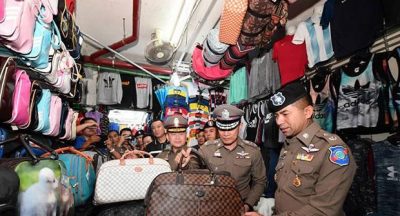Public health interventions to protect against falsified medicines: a systematic review of international, national and local policies.
Accurate definitions of poor quality medicines are essential. The World Health Organization (WHO) uses the umbrella term, ‘Substandard/Spurious/Falsely labelled/Falsified/Counterfeit medical products’ (SSFFC ( World Health Organization 2016a ), sometimes shortened to SFFC), though there is no universally agreed definition for this. Previously, WHO defined ‘counterfeit’ medicines as being, ‘deliberately and fraudulently mislabelled with respect to identity and/or source’ (World Health Organization 2016a ). However, it has been argued that the causes and solutions of the constituent problems in the SSFFC grouping are different ( Newtonet al. 2011a ; Attaran et al. 2012 ); in particular, ‘counterfeit’ should not be conflated with falsified and substandard, as this may shift focus away from public health issues and more towards intellectual property (IP) concerns ( Newton et al. 2011a ). We use the term ‘ unregistered generic’ to refer to safe and effective medication manufactured without proper IP law authorisation. This is a legal and economic problem but does not pose a direct threat to public health and is not a major focus in this review. In contrast, ‘ substandard ’ drugs are, ‘genuine medicines produced by manufacturers authorised by the National Medicines Regulatory Authority (NMRA) which do not meet quality specifications set for them by National standards’ ( World Health Organization, 2016a ). ‘Degraded ’ medicines were of adequate quality when they left the factory but have subsequently degraded, for example through inadequate storage or transport conditions ( Newton et al. 2009 ). We use ‘ falsified ’ to refer to medicines that have been fraudulently produced and distributed and which do not meet the quality specifications for that drug—these are the primary focus of this review. Lastly, we use the term ‘ poor quality ’ to refer collectively to falsified, substandard and degraded medicines, which all pose serious threats to public health.
Poor quality medicines directly harm patients by denying them access to potentially life-saving active pharmaceutical ingredients (API), or exposing them to toxins. It was recently estimated that 122 350 deaths in children under 5 years old in Sub-Saharan Africa were attributable to poor quality antimalarials in 2013 ( Renschler et al. 2015 ), representing 3.75% of all under-five child deaths in the region. Poor quality medicines also have pernicious consequences for communities and healthcare systems ( Newton et al. 2006b , 2010 ; Mackey and Liang 2011 ;Karunamoorthi 2014 ), causing lack of faith in healthcare amongst local people and providing a source of funding for organised crime networks. Of broadest consequence is the potential to promote antimicrobial resistance (AMR), now recognised as a major threat to global public health ( Pisani 2015 ).
https://academic.oup.com/heapol/article/31/10/1448/2567085
Related Posts
Gold worth Rs 8.50 crore seized near India-Bangladesh border, 2 smugglers arrested
Border Security Force (BSF), on Saturday, foiled yet another gold smuggling...
B42m pirated goods seized at Patong shopping street.
27, October 2018 l Bangkok Post PHUKET: More than 300,000 items of counterfeit...
Patagonia accuses Nordstrom of selling counterfeit products in a new lawsuit
In a new lawsuit, Patagonia has accused Nordstrom of selling imitations of its...
Telangana: DCA busts illegal drug manufacturing; medicines licenced as food products; stocks Seized
The Drugs Control Administration (DCA), Telangana, in a recent series of...






